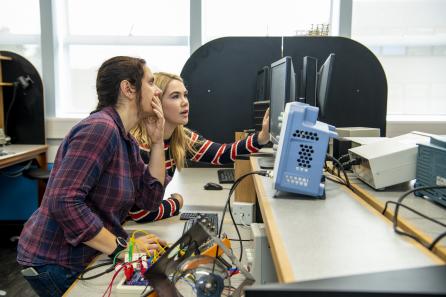
MPhys
The four-year MPhys is the most flexible degree programme, allowing you to shape the course to your interests.

The four-year MPhys is the most flexible degree programme, allowing you to shape the course to your interests.
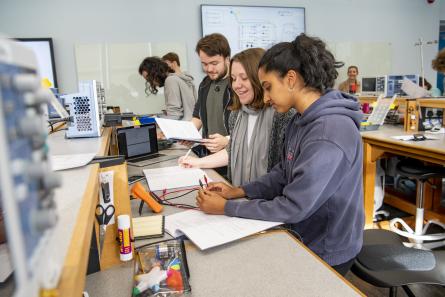
Learn about the fundamentals of physics in three years.
Hear from current student Sai about studying Physics and Astronomy at Southampton.

Learn about the fundamentals of physics in three years.

The four-year MPhys is the most flexible degree programme, allowing you to shape the course to your interests.
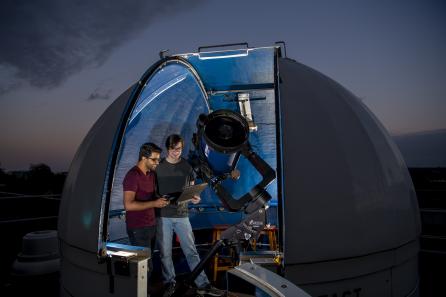
Investigate incredible astronomical events and take a field trip to the Mount Teide Observatory in Tenerife.
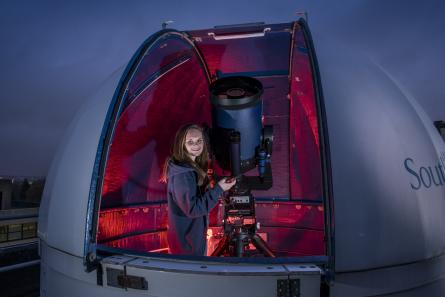
Fuel your fascination for space and the technologies we use to investigate it.
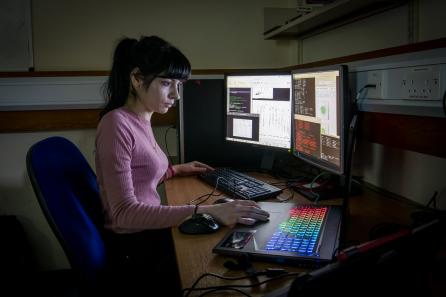
Develop a profound understanding of mathematics, the language of theoretical physics.
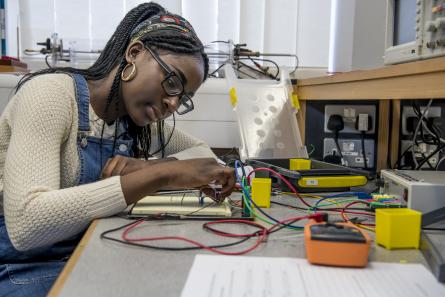
Study the behaviour of matter down to the scale of a single atom.
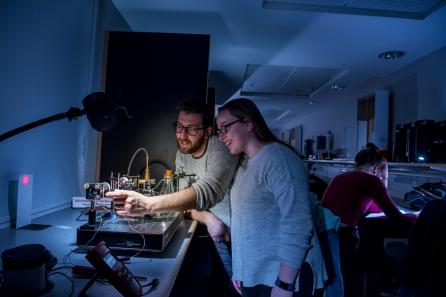
Discover the science of light.
See the facilities you'll be working in and hear all about your practical training at Southampton.
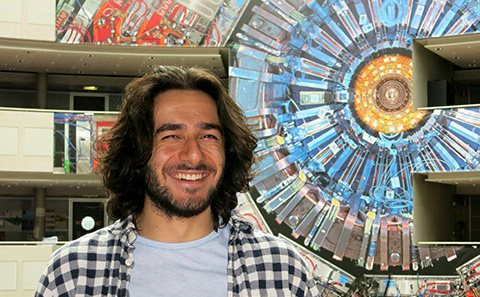
Complete an in-depth research project here at Southampton, or at another organisation such as CERN or the Harvard-Smithsonian Center for Astrophysics.
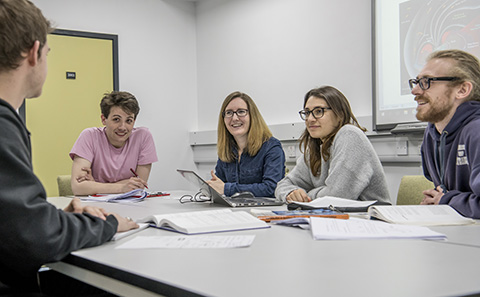
Hear first-hand from our students about what it’s like to study physics.
Hear from current student Sai about studying Physics and Astronomy at Southampton.
Professor Anne Tropper has been presented the 2021 SPIE Maiman Laser Award for pioneering contributions during a dynamic research career at the University of Southampton.
The prestigious honour from the international society for optics and photonics recognises the physicist's key advancements in rare-earth doped fibre and optically pumped semiconductor lasers.
Anne is a founding member of the Optoelectronics Research Centre at Southampton, one of the world's leading institutes for photonics research, and served as head of the Quantum, Light and Matter group between 2007 and 2012.
She has been based at the University of Southampton since 1983 and maintains this longstanding connection today as an Emeritus Professor in the School of Physics and Astronomy.
Anne says: "I am deeply honoured to receive this prize named after Theodore Maiman, creator of the first working laser. It is a testament to the vision of the individuals in Physics and Astronomy who set up the Laser Physics Group and gave so much support and encouragement to my endeavours.
"My original realisation of lasers constructed not around optical rods but optical fibres, embodying a paradigm shift that transformed every aspect of the physics and engineering of these light sources. As a result, we have lasers and amplifiers that are sturdy, energy-efficient, broad-band and spectrally versatile, with transformative impact in technologies ranging from data communications to surgery to industrial production."
The Southampton professor's influence in optical physics over the past 40 years has touched the work of many groups in fields that include fibre lasers and amplifiers, upconversion lasers, spin dynamics in semiconductors, and ultrafast semiconductor laser physics.
She was the first to demonstrate the ytterbium silica fibre laser and highlight the unique potential of this system for efficient high-power operation, a discovery that today forms the basis of the high-power fibre laser market for industrial manufacturing.
New fibre lasers first reported by her group at Southampton include thulium and holmium silica in the mid-infrared, and infrared-pumped visible lasers based on praseodymium-doped fluoride glass.
The SPIE Maiman Laser Award is named in honour of Theodore Maiman, an American physicist and engineer who is widely credited with the invention of the laser. The honour was established in 2020 and recognises sustained contributions to laser source science and technology at the highest levels.
SPIE's 2021 society awards have been announced this month for 21 distinguished recipients whose achievements span a wide range of light-based sciences and key advancements made by these technologies in areas including medicine, astronomy, lithography and optical metrology.
Researchers at the University of Southampton will break new ground in astronomy and space environment physics in over £3 million of diverse research funded by the Science and Technology Facilities Council (STFC).
Eight projects will be advanced in the School of Physics and Astronomy over the next three years, covering a wide range of theoretical and observational work in stellar-mass and supermassive black holes, supernovae, and planetary magnetospheres.
The novel research, based in the Southampton Astronomy Group and Space Environment Physics Group, will be driven forward by leading scientists with a team of postdoctoral research associates, and showcased beyond the University in a suite of public engagement activities.
Professor Mark Sullivan, Head of Physics and Astronomy, says: "The quality and innovative nature of these ambitious projects further reinforces our long-standing reputation for world-leading research in these fields. This is an exceptional outcome in a very challenging funding climate, and I look forward to seeing the impact of this ground-breaking work in the coming years."
Seven of the Southampton projects will focus on new advances in astronomy, with a specific focus on compact objects and their origins.
Professor Poshak Gandhi will investigate the formation channels of black holes in one strand by consolidating state-of-the-art astrometric measurements with multiwavelength characterisation. Professor Sullivan will be undertaking a study of 3,000 supernovae from the optical Legacy Survey of Space and Time (LSST) with the new spectroscopic facility 4MOST, exploiting Southampton-led involvement in a UK-based consortium.
Dr Matthew Middleton is further developing the application of a completely new technique to isolate black hole ultraluminous X-ray sources. Dr Diego Altamirano will address key questions in accretion physics by exploiting a Southampton-led fast optical camera, OPTICam, together with unique access to the Neutron Star Interior Composition Explorer (NICER) and AstroSat space observatories.
Professor Christian Knigge will develop and test models for the disk winds in active galactic nuclei, the compact region at the centre of galaxies hosting supermassive black holes. Professor Ian McHardy will explore X-ray, radio and UV-optical connections to build understanding of the inner geometry and emission processes of these accreting supermassive black holes. In a further project, Professor Sebastian Hoenig and Professor Francesco Shankar will collaborate on three dimensional radiation-hydrodynamic simulations that will address the question of how supermassive black holes merge as the final process of galaxy collisions.
Within the Space Environment Physics Group, Dr Robert Fear and Dr Imogen Gingell will address questions about how the Earth's magnetosphere responds to the solar wind on a large scale. The nature of this interaction depends on the orientation of the interplanetary magnetic field, which is associated with the solar wind.
The project will use satellite observations to test mechanisms that have been advocated for previously observed complex structure in the magnetosphere. This will enable the team to hunt for the signature of that structure's predicted interaction with the solar wind, and to investigate equivalent structure present in global simulations of the magnetosphere.